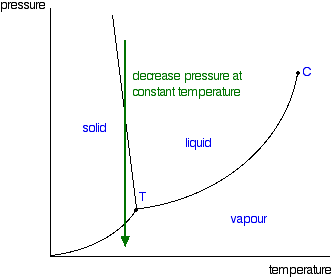

The rate may be about 1 ☌/min, but it may be more, or less, depending on the system. The key to high quality results in this exercise is slow cooling to prevent supercooling 1,2 and to allow for observation of the breaks and arrests. Place the temperature probe in the sample and start recording the temperature. Place the substances in the sample holder (a small test tube) and heat to melting (a beaker of hot/boiling water is sufficient for this).

Precisely weigh out the appropriate amount of each substance to achieve the desired mole fraction (maximum mass should be less than about 3 g). Choose the LoggerPro acquisition parameters so that you take enough data to clearly see the break and arrests in the cooling curve. Each day you will need to perform a three-point (0 ☌, room temperature, and 100 ☌ are convenient) calibration of the the temperature probe to assure accurate and precise readings. Click here to review the use of the temperature probe and the LoggerPro software. You will be recording the temperature as a function of time using a Vernier temperature probe interfaced to a computer running the LoggerPro software package through the LabPro interface. If two groups will be working simultaneously on this exercise, please coordinate your activities with the other group. The kit for this exercise that contains supplies (1 Vernier temperature probe and 2 small test tubes) for two groups to work on this exercise separately. Take care when handling these compounds to minimize everyone’s exposure to these substances. From these data you will generate the phase diagram for the system and determine Δ fusH and the melting point for the two pure substances in your system.ĬAUTION! Pay careful attention to the health and safety cautions accompanying the substances used in this exercise. In this exercise, you will measure cooling curves of either the napthalene-biphenyl system (group 1) or the napthalene-durene (1, 2, 4, 5-tetramethylbenzene) system (group 2). Solid-liquid phase diagrams show the phase relationships in mixtures of two or more components and are very important in understanding the behavior of mixtures in metallurgy, material science and geology.


 0 kommentar(er)
0 kommentar(er)
